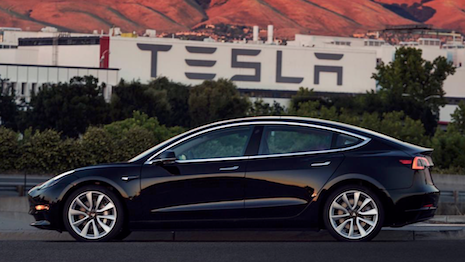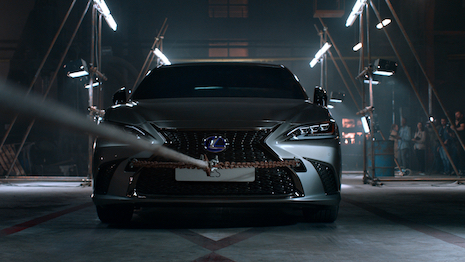 Tesla's Model 3 sedan. Image credit: Tesla
Tesla's Model 3 sedan. Image credit: Tesla
Currently the automotive industry is exceptionally competitive, as customer loyalty becomes less solid thanks to marginal differences between sectors when it comes to quality. According to the MaritzCX New Vehicle Customer Survey, both luxury and non-luxury segments are most interested in blindspot warning, cross-traffic alerts, lane departure warning and auto brake assist in terms of in-vehicle technology. Sport utility vehicles and ride sharing continue to be disruptors for automakers, with 49 percent of consumers being most interested in SUVs and the number of ride sharing users growing 4 percent in one year. “In almost every segment you see how closely bunched the entries are,” said Shawn St. Clair, senior director of syndicated and autonomous research at MaritzCX. “With five factors – comfort, quality, performance, safety, cost of ownership – being used for scoring, one would expect to see large differences. “The difference between winning a segment and middle of the pack is being average in a single factor,” he said. “You have to offer great vehicles based on multiple factors. “These razor-thin margins show how competitive each segment is and how customers could easily defect to a different product. Manufacturers need to understand what areas they are behind and attack these deficiencies immediately.” Driving auto insights For premium models in North America, Tesla’s Model 3 saw the highest consumer ratings across comfort, quality, performance, safety and ownership cost for small car. Tesla’s Model S won out for mid-size sedan, and its Model X was top rated for midsize SUV. The Lincoln Navigator had the highest rating for a large SUV and the Porsche Macan took the top score for the small SUV category.
The report shows that in 1998, cars were the driving force in model type with 52 percent of sales. But 10 years later, SUVs have the majority at 49 percent and cars see only 34 percent of total sales. The population of ride-sharing users has grown 4 percent from 2017 to 2018, with 29 percent of consumers saying they have used a ride-sharing service. Thirteen percent of car buyers cited how a potential vehicle would be as ride-sharing cars when shopping. Japanese brands are on the rise, with interest growing 18 percent in the United States market within 10 years. From 1998 to 2018, European brands also rose 3 percent, while Korean brands increased by 7 percent.
 The Lexus ES. Image credit: Lexus
The Lexus ES. Image credit: Lexus
